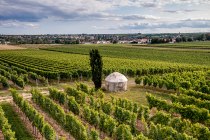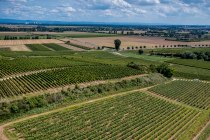Dreissigacker winery
In 2001 Jochen Dreissigacker pressed his first wine "GEYERSBERG Riesling dry". In 2005, the 39-year-old took over the 42 hectare family winery in Bechtheim, Rheinhessen, which has been eco-certified since 2007.
The autonomy of his wines has been his main goal right from the start, in order to implement his ideas with as little influence as possible to differentiate himself from the competition. But independence is not one of the simplest endeavors: The separately developed vineyards, the manual work that goes down to the smallest detail and, above all, the constant examination of the locations, soils and plants cost time - Dreissigacker and his team often spend up to 14 hours a day in the vineyards.
At Dreissigacker, it is the characteristics and characteristics of soils, sites and plants that are transported into his wines with great patience and care and, year after year, conjure up a very own collection. The name Dreissigacker does not stand for lightweights, but for particularly powerful, fine mineral and elegant wines.



















